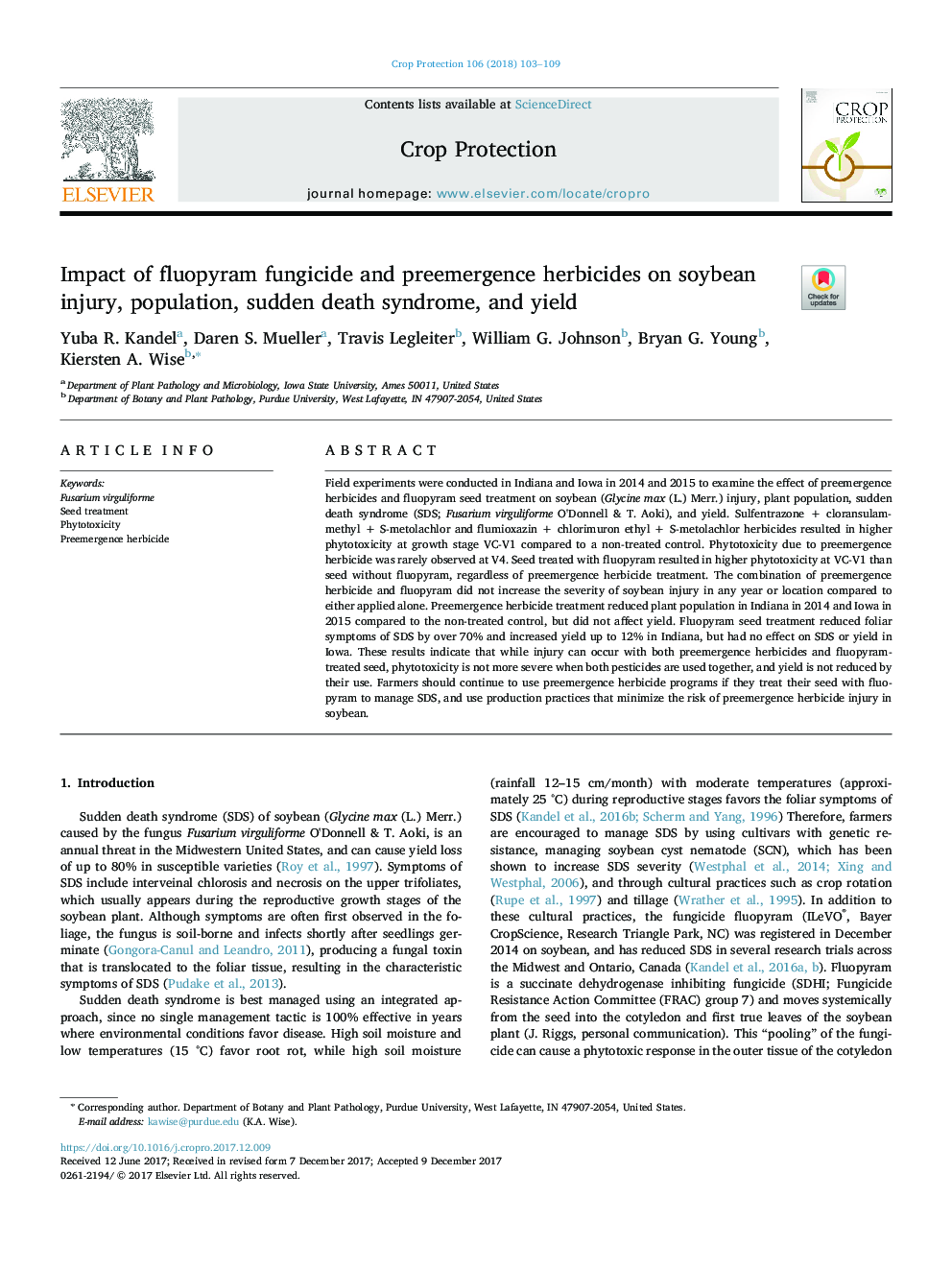| Article ID | Journal | Published Year | Pages | File Type |
|---|---|---|---|---|
| 8878247 | Crop Protection | 2018 | 7 Pages |
Abstract
Field experiments were conducted in Indiana and Iowa in 2014 and 2015 to examine the effect of preemergence herbicides and fluopyram seed treatment on soybean (Glycine max (L.) Merr.) injury, plant population, sudden death syndrome (SDS; Fusarium virguliforme O'Donnell & T. Aoki), and yield. Sulfentrazone + cloransulam-methyl + S-metolachlor and flumioxazin + chlorimuron ethyl + S-metolachlor herbicides resulted in higher phytotoxicity at growth stage VC-V1 compared to a non-treated control. Phytotoxicity due to preemergence herbicide was rarely observed at V4. Seed treated with fluopyram resulted in higher phytotoxicity at VC-V1 than seed without fluopyram, regardless of preemergence herbicide treatment. The combination of preemergence herbicide and fluopyram did not increase the severity of soybean injury in any year or location compared to either applied alone. Preemergence herbicide treatment reduced plant population in Indiana in 2014 and Iowa in 2015 compared to the non-treated control, but did not affect yield. Fluopyram seed treatment reduced foliar symptoms of SDS by over 70% and increased yield up to 12% in Indiana, but had no effect on SDS or yield in Iowa. These results indicate that while injury can occur with both preemergence herbicides and fluopyram-treated seed, phytotoxicity is not more severe when both pesticides are used together, and yield is not reduced by their use. Farmers should continue to use preemergence herbicide programs if they treat their seed with fluopyram to manage SDS, and use production practices that minimize the risk of preemergence herbicide injury in soybean.
Related Topics
Life Sciences
Agricultural and Biological Sciences
Agronomy and Crop Science
Authors
Yuba R. Kandel, Daren S. Mueller, Travis Legleiter, William G. Johnson, Bryan G. Young, Kiersten A. Wise,
